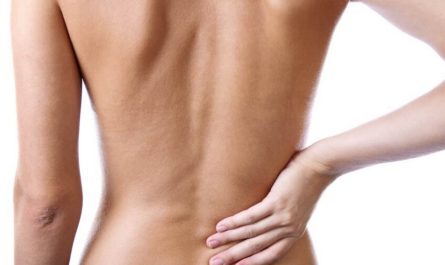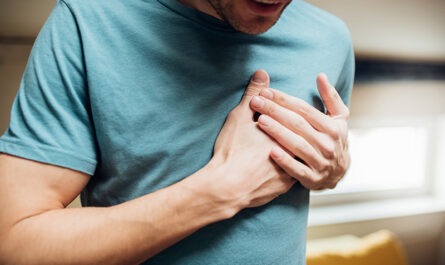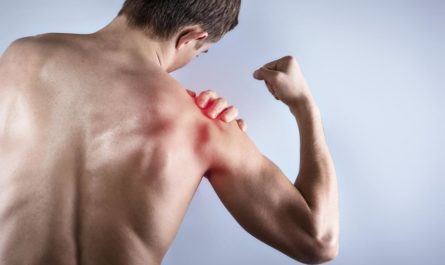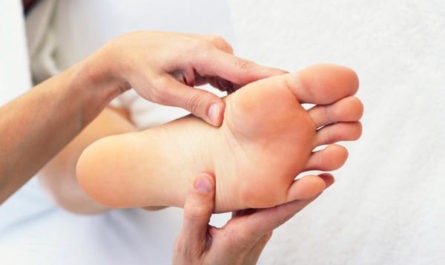The liver is one of the body’s largest and most vital organs. Yet, many people do not know the exact location of this organ. This article will provide information about its anatomy, function, and various causes of liver pain. At the end of the article, we will discuss how to strengthen your liver naturally.
Where Is Your Liver Located?
Your liver is located on the upper right side of your abdomen, under the right ribcage. It sits above your stomach, below your lungs, and besides the pancreas, gallbladder, and intestines. You can determine the exact location of the liver using the following three methods.
1. The Surrounding Organs
The liver is composed of the left lobe and right lobe. The surrounding organs are your stomach, lungs, pancreas, gallbladder, and intestines.
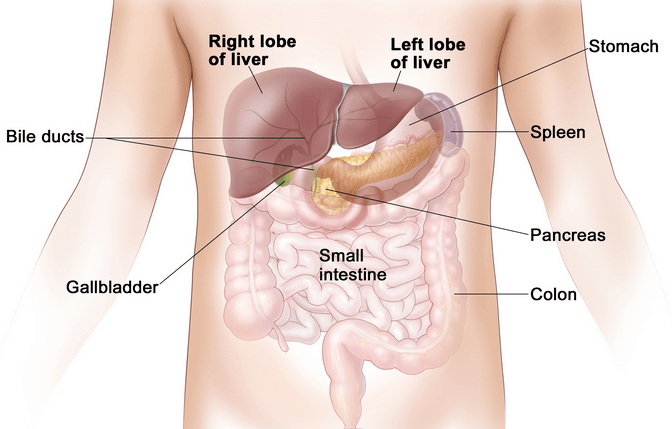
2. Four Quadrants
Your abdomen can be divided into four quadrants: left upper quadrant, left lower quadrant, right upper quadrant, and right lower quadrant. Your liver is situated in the left and right upper quadrants. You can find the bigger lobe in the right quadrant. So liver pain mainly appears in this area.
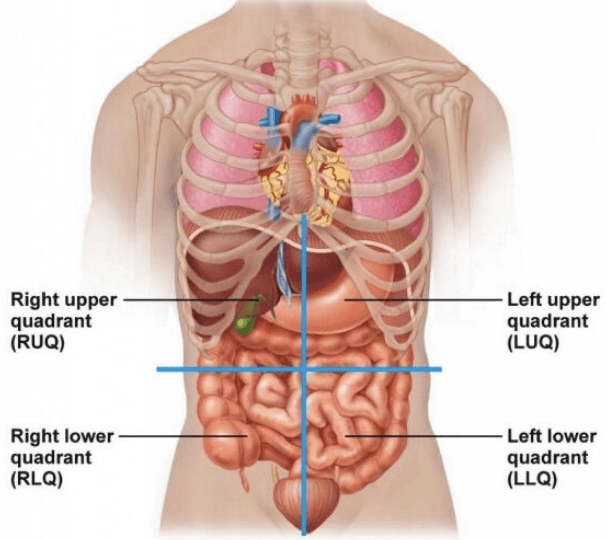
3. Nine Regions
The abdomen can also be divided into nine regions, including the left hypochondriac region, left lumbar region, left iliac region, right hypochondriac region, right lumbar region, and right iliac epigastric region, umbilical region, hypogastric region.
Your liver is located in the left hypochondriac region, epigastric region, right hypochondriac region, and right lumbar region. You may often feel liver pain in the epigastric or right hypochondriac regions.
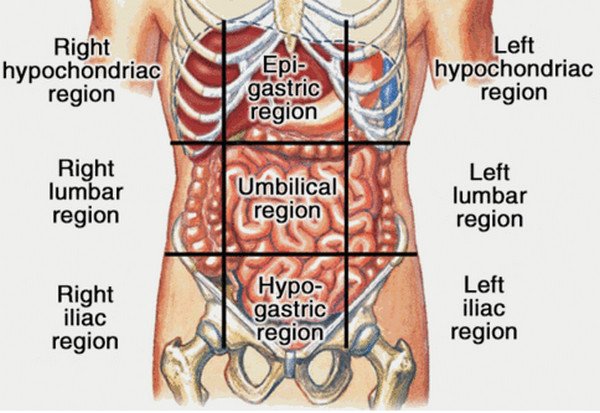
The function of the Liver and Symptoms of Liver Pain
Doctors from WebMD say that the liver is a red-brown fleshy organ weighing about 3 pounds. Because ribs protect it, you generally cannot feel the liver. Your liver is located next to the pancreas, gallbladder, and intestines. These organs work together to digest and absorb food.[1]
The liver’s primary function is to filter the toxins in the blood. It also helps digest foods, stores sugar, and excretes harmful substances. The gallbladder under the liver can secrete bile. Bile can help break down fats and help the body absorb nutrients. In addition, the liver also plays a vital role in providing protein, blood clotting, and the immune system.
The liver is so essential, yet it is susceptible and fragile. A lot of diseases and infections can cause liver pain. The pain may occur under the right rib cage, spreading towards your back area.
Doctors from Healthline say liver pain feels like a dull, throbbing, or stabbing sensation in your upper right abdomen. Sometimes it starts from below the right ribcage and spreads to your back or right shoulder blade. You may also feel chronic itching, nausea, and fatigue with swelling, anemia, and weight loss.[2]
If your liver pain lasts for a long time or the pain is severe and unbearable, see your doctor immediately.
Common Causes of Liver Pain and Liver Conditions
1. Liver Cirrhosis
Liver cirrhosis occurs when the liver’s cells and tissues deteriorate and impact its function. This condition is irreversible scarring of the liver.
Over time, the damaged tissue will block blood flow through the liver. When the damage is too severe, the liver tissue cannot repair itself completely. This will cause chronic liver failure or end-stage liver disease.
The most common causes of cirrhosis are hepatitis B, C, and D infection and chronic alcoholism caused by alcohol abuse. In addition, poor immune systems can also lead to cirrhosis.
The early symptoms of cirrhosis are not obvious, and patients may experience weakness, fatigue, nausea, and rapid weight loss. Patients may experience severe pain around the liver area as the disease aggravates. Other symptoms of cirrhosis include confusion, yellow skin, abdominal swelling, easy bleeding, and swelling of the legs and ankles.
Treatment for Cirrhosis depends on the underlying cause. In some advanced cases, patients may need a liver transplant.
2. Fatty Liver Disease
Fatty liver disease refers to the excessive accumulation of fat in the liver. The exact cause of nonalcoholic fatty liver disease (NAFLD) is still unknown. Still, it is usually caused by being overweight, gastric bypass surgery, high cholesterol, and type 2 diabetes or autoimmune diseases.
But there is not enough research to prove the exact cause. The common cause of Alcoholic fatty liver disease (AFLD) is excess alcohol intake. In most cases, this condition has no symptoms. But some people may also experience fatigue, confusion, loss of appetite, and weight loss. Left untreated, it may lead to inflammation and scarring of the liver.
Fatty liver disease may also cause pain in your upper right abdomen, but it is mild in many cases. The pain caused by Alcoholic fatty liver disease will aggravate after a heavy drink. There is no standard treatment now, and you should try eliminating the underlying condition, such as obesity.
3. Liver Cancer
Liver cancer is one of the most serious types of cancer that can cause severe pain in the right ribs. Tumors can lead to swelling of the liver and spleen. Often, cancer does not start in the liver but comes from other body parts that spread to the liver.
The pain caused by Liver cancer is usually constant and dull, but sometimes it may be sharp. Other symptoms of liver cancer include yellow skin, swelling of the abdomen, pain in the right blade, weight loss, and severe pain in the ribs.
In recent years, the incidence of liver cancer in the United States has been increasing due to an increase in cirrhosis and nonalcoholic fatty liver disease. Treatments for Liver Cancer include radiation, chemotherapy, transplant, and removal of part of the liver.
4. Liver Cysts
Liver cysts are small cystic fluids formed in the liver that can cause the liver to become enlarged. If the cyst is chronic, you may feel swelling and excruciating pain in the upper abdomen.
The cyst may also cause bleeding in the liver. The pain may disappear once the bleeding stops. The exact cause of liver cysts is still unknown now. If the pain persists, you’d better go to the hospital immediately.
5. Hepatitis
Hepatitis generally refers to inflammation of the liver. A viral infection usually causes it, but it can also be caused by too much alcohol, medications, ingesting toxins, and other medical conditions.
The primary type of virus that affects the liver is the Hepatitis virus. There are several types of the virus, including Hepatitis A, B, C, D, and E.
- Hepatitis A – This is a type of Hepatitis that is acquired through food, feces, and contact by hand or mouth. It is a mild form of Hepatitis, and people can recover from it. The liver pain may last weeks to months, depending on the person’s treatment.
- Hepatitis B – This is a type of Hepatitis that is acquired through body fluids and sexual interaction. This type of Hepatitis can become chronic, and a person can experience it for the rest of his life. You can also suffer from liver damage and pain.
- Hepatitis C is the most severe form of Hepatitis, which can develop liver cirrhosis or liver cancer. Tattoos, blood transfusions, sharing of needles, and unprotected anal intercourse are the leading causes.
- Hepatitis D – This type of Hepatitis usually affects people with hepatitis B, a secondary infection.
- Hepatitis E- This type of Hepatitis is transmitted through food and water.
- Eppstein-Bar Virus -Eppstein-Bar Virus, also called mononucleosis, is often mistaken for strep throat. This virus can cause the autoimmune system to attack the liver for no apparent reason.
Hepatitis has been a common disease in recent years. According to a report from the Centers for Disease Control and Prevention (CDC), about 4.4 million people in the United States have chronic Hepatitis. What’s more serious is that many don’t realize they have Hepatitis.
Hepatitis A, B, and C are the most common types of Hepatitis in the United States. Although Hepatitis B, C, and D are rare, they can cause chronic Hepatitis, cirrhosis, liver failure, and liver cancer.
If you suspect you are exposed to a hepatitis virus, you should go to the hospital for examination as soon as possible. Anti-viral medications can help reduce the virus’s effects on the body.
6. Excessive Alcohol Consumption
One of the leading causes of people suffering from liver disease is drinking too much alcohol.
According to doctors from Healthline, alcohol can come in different forms. You do not have to worry about liver damage as long as you drink moderately.
Those who drink alcohol heavily may start to feel pain after drinking.[3]Some people may experience discomfort when the liver tries to separate the alcohol from the body. This usually occurs a few hours after drinking.
Excessive Alcohol Consumption can also cause other symptoms, including cirrhosis, poor appetite, fatigue, jaundice, confusion, and fluid build-up in the abdomen. Liver pain due to alcohol may be temporary. If the person stops drinking heavily, the pain may disappear on its own.
7. Hepatic Artery Occlusion
Hepatic artery occlusion is the blockage of blood flow through the liver organs. This is usually caused by vasculitis, atherosclerosis, or a blood clot in the blood. In some cases, free-floating blood clots also enter the liver vasculature causing hepatic artery occlusion.
When the cell in the liver is damaged due to the restricted blood supply, you may experience fever, nausea, jaundice, vomiting, and pain in the right upper abdomen.
8. Cholestasis
Bile is a type of digestive fluid produced by the liver that helps digest fat. Suppose the gallbladder or liver is damaged for some reason.
The flow of bile may be affected. When the bile is not properly excreted into the digestive system, it will be absorbed by the body. This will cause an increase in the substance bilirubin in the blood. Cholestasis can cause some symptoms, such as jaundice, dark urine, itchiness, and pain.
9. Medications
Some medications may be harmful to the liver in large dosages. They need a liver test to check if the liver is strong enough for patients. Some drugs that are toxic to the liver are as follows:
- Some cholesterol-lowering drugs
- Anti-fungal medication
- Acetaminophen
- Anti-seizure medications
There are times when it is not medications that can cause liver toxicity but exposure to various chemicals that the liver cannot cleanse. For example, pesticides can cause liver toxicity. Not all herbal remedies are as safe as they sound. Some may cause liver toxicity too.
10. Cholangitis
Cholangitis, also known as acute cholangitis, is inflammation of the bile duct system. A bacterial infection causes this condition.
Usually, the bile from the liver and gallbladder flows down the bile duct to the small intestine. Cholangitis will occur if the bile duct is blocked by gallstones, tumors, or blood clots.
Cholangitis may cause sharp pain in the right upper quadrant of the abdomen. Other symptoms may include fever, uneasiness, jaundice, and uncontrollable shaking.
11. Ascites
This is usually the end effect of liver disease. There are pockets of fluid that form in the abdomen. The liver is supposed to empty these pockets, but since it is not working as it should, the fluids start to increase. The excess fluid causes pressure on the other organs of the body. You may feel extreme pain until the fluids are removed.
12. Trauma
If there is injury or trauma that is near the liver, this can be considered fatal. Some common trauma includes gunshots and a knife stabbing, and blunt force. Remember that all types of forceful action applied to the upper right portion of the abdomen can be deadly for many people.
13. Food Contains Toxins
Another possible cause of liver pain is drinking a large amount of food containing toxins. The liver may find it hard to filter out the toxins from the food.
You will start to experience the pain around 2 hours after you have eaten. If you get pain minutes after you have eaten, you suffer from digestive pain and not liver pain.
14. Hemochromatosis
Hemochromatosis refers to too much iron in the liver caused by some medical conditions. Although iron is essential for your health, too much iron can cause iron deposition in the liver. This could cause the liver to swell and get damaged.
Hemochromatosis is a disease that is difficult to detect early, and you may feel weak and have joint pain, stomach pain, weight loss, and liver pain.
15. Pyogenic liver abscess
A suppurative liver abscess is a pus pocket formed in the liver due to bacterial infection. The pus is usually composed of dead cells and white blood cells.
Usually, the body will discharge pus. But if pus pockets appear in the liver, pus will collect in the pocket. This will lead to swelling, inflammation, and pain in the abdomen. This is a fatal disease, and it should be treated right away.
16. Portal Vein Thrombosis
The portal vein refers to the vein that supplies blood to the liver from the stomach, spleen, pancreas, and intestines. Blockage of the portal vein can cause an increase in portal pressure and an enlarged spleen. This can lead to severe pain, abdominal effusion, and liver bleeding.
17. Other Condition
Some illnesses, such as gastric ulcers, GERD, pancreatitis, right lung problems, spine problems, and gallbladder disease, can be mistaken for liver issues.
The gallbladder is located just under the liver. It can secrete bile to digest food. You may have high liver enzyme levels when you have gallbladder disease.
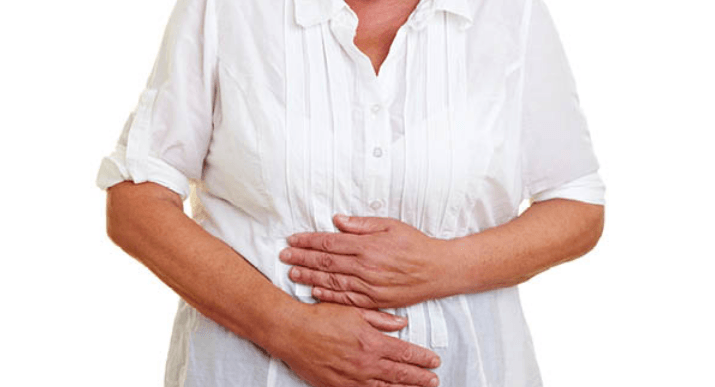
How to Prevent Liver Pain and Strengthen Your Liver
Prevention is always better than cure, so look at your lifestyle now and make the necessary changes. Many natural ingredients in foods will help remove toxins from your body.
1. Drink Water
Drinking plenty of water is very helpful for your health; it can help clear the liver’s toxins and improve blood circulation, especially if your liver pain is caused by drinking. This pain is often caused by dehydration.
Drinking lots of warm water can also help stimulate bile secretion to help the liver digest food. Drinking 2–3 liters of water daily can effectively help prevent liver pain and improve your overall health.
2. A Healthy Diet
A healthy diet can effectively enhance your liver function and prevent damage from alcohol and bacteria.
- Try to reduce the consumption of fatty, fried, and rich foods. These foods can worsen your liver pain as they force the liver to work harder.
- Avoid foods rich in sugar or other refined carbohydrates, such as ice cream, soda, and baked goods. These foods can worsen your liver conditions, such as the fatty liver.
- Green leafy vegetables have an antioxidant function that can help clean the liver and reduce the toxins in the liver. At the same time, it can effectively reduce the risk of cardiovascular disease and liver disease.
- Cruciferous vegetables such as kohlrabi, cauliflower, cabbage, and broccoli can help the body prevent various diseases.
- Eat healthier foods such as seeds, beans, olive oil, fish, and seafood. These foods contain large amounts of Omega-3, which can effectively help reduce the impact of liver disease.
- Eat more beets. Beets can help improve blood health. They also have antioxidants that can keep the body healthy overall. If you are not too fond of eating beets, you may substitute them with leafy greens.
- Eat more garlic. You can add garlic to your diet through the food that you eat. This is effective in getting rid of the toxins that may eventually cause liver damage.
3. Lessen Your Alcohol Intake
Excessive drinking can cause damage to the liver, as alcohol can disrupt normal liver function and cause alcoholic hepatitis and liver pain.
A study from the Journal of Hepatology found that even a small amount of daily alcohol consumption will increase the risk of developing cirrhosis and other diseases. Some liver problems, such as fatty liver and inflammation caused by alcohol, can be cleared by simply stopping drinking.
However, liver problems like cirrhosis can not be reversed by simply stopping drinking.
4. Improve Your Oral Hygiene
According to the latest study, there is a link between oral hygiene and liver disease. Good oral hygiene practices include regular brushing, natural toothpaste, and suitable brushing methods. This can help remove bacteria from the mouth and prevent them from invading your body organs.
5. Yogurt
Yogurt is an effective home remedy for liver pain. It has an antibacterial property that can help eliminate harmful bacteria in the gut. Moreover, it has soothing effects that can help relieve abdominal pain. You can eat 1 cup of yogurt after every meal to relieve liver pain.
6. Green Tea
This is known to come with many benefits, and protecting your liver is just one of them. When you drink enough green tea, you can effectively boost your digestion. If you drink a few cups a day, this can be good for you.
7. Get Enough Vitamins
The health of the liver needs some essential vitamins. Make sure that you get Vitamins K, A, and B1. However, do not consume too much iron, as this can cause problems with the liver in the long run.
8. Avoid Over-the-counter Pain Medications
Taking too many over-the-counter pain medications may cause liver damage. Acetaminophen and ibuprofen can also increase liver distress. If you have to take it, make sure to take less dose.
9. Regular Physical Examination
This article will find many conditions that can lead to liver pain, so it is essential to find the exact cause. Regular physical examinations such as blood tests, CT scans, MRIs, and ultrasounds can help identify liver problems.
10. See Your Doctor
If the liver pain persists for several hours and the pain is accompanied by dizziness, nausea, or hallucinations. You should see your doctor immediately, which may indicate severe liver disease. In some cases, you may need emergency care.


